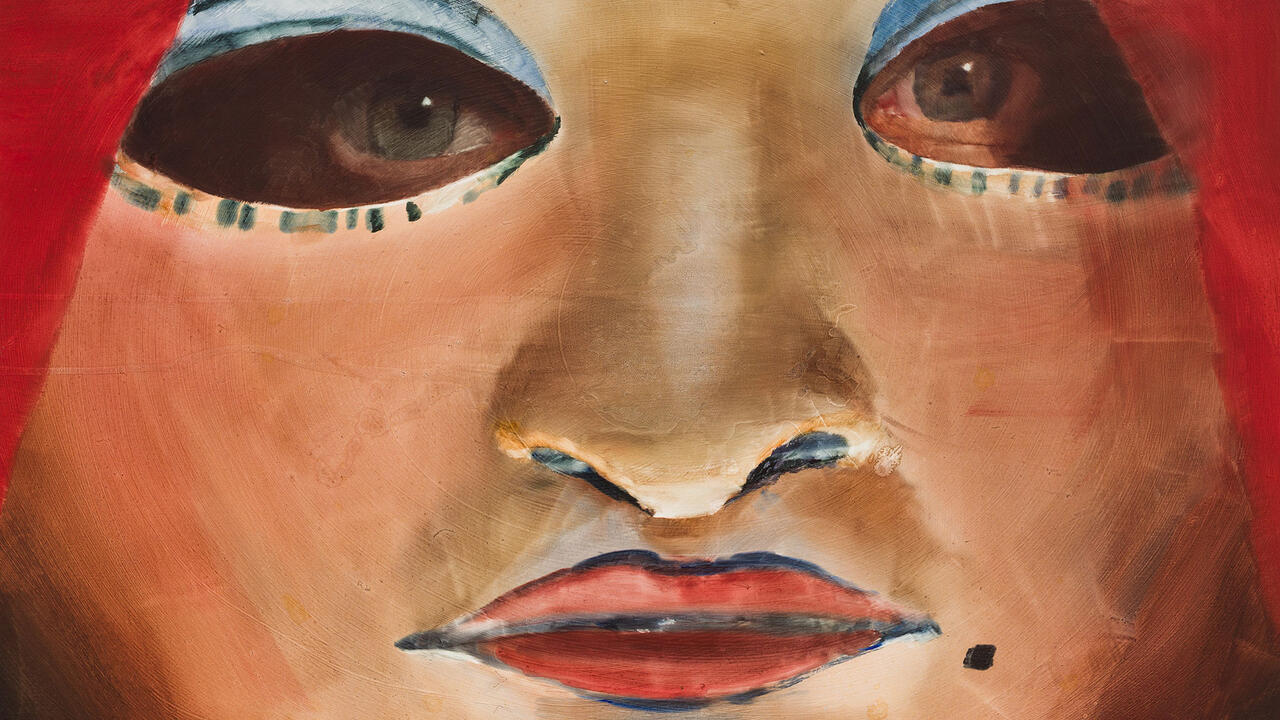Alessandro Pessoli
In his documentary about the Soviet filmmaker Alexander Medvedkin (The Last Bolshevik, 1993) Chris Marker notes that ‘it is not the past that rules us, but images of the past’. The film tracks how staged scenes – from Sergei Eisenstein’s propaganda films, for example – are now taken as historical documents of the real events. In Alessandro Pessoli’s exhibition, ‘Baracca’s Time’, the Italian artist approaches this historiographical problem from another angle. While Marker deconstructs apparently factual images to show their basis in fiction, Pessoli constructs his own version of history to highlight how historical narratives employ stylistic tropes.
History, Pessoli suggests, is told as fiction – and legend is told as both. The show, a series of gouaches and a suite of ceramics, revolves around the heroic figure Francesco Baracca, an ace Italian fighter pilot in World War I. Baracca was shot down in 1919 and found dead in his cockpit, a bullet wound in his head and a pistol in his hand. The unresolved circumstances of his death, together with the suggestion that he had taken his own life in order not to be captured, increased his mystique – so much so that the car company Ferrari, for example, took the prancing horse he painted on his plane as its logo.
For Pessoli, Baracca is a symbol of legend’s blending of fact and fiction, and the distance it engineers between a figure’s real life and the life he leads in the popular imagination. Pessoli depicts the pilot’s story through dreamlike gouaches and maiolica (the ceramic technique typical to his native region of Italy). Having decided that objectivity cannot communicate the emotional dimension of popular myth, he trades gravitas and neutrality for the fantastical and sentimental. The gouaches are appealingly whimsical, and have the all-over saturation of sexual enthusiasm that characterizes Carroll Dunham at his best. A palette of muddy pastels – backgrounds of pinks and blues – suggests the haze of memory as well as the idea of purple sentiment. Figures appear clownish, with out-of-proportion features, propellers for noses and (in Pilota, Pilot, 2005) the diamond-patterned trousers of a court jester. Sketchily drawn soldiers assist in scenes of triage, pose forlornly for portraits or sit in the cockpits of planes decorated with flowers. In the middle of the exhibition space ungainly maiolica figurines stand improbably on wooden stools, like rejected extras from an anime film waiting to topple over (the gallery asked you to walk carefully around them). The events of the Great War appear improvisatory and chance-filled.
The most obvious point of reference for the show is Francisco Goya’s ‘Disasters of War’ (1810–14) – a historical precedent that doesn’t do Pessoli any favours. War may not absolutely warrant serious depiction – there is room for the wonky in anything. Pessoli does better when he takes off from more recent ideas of historical depiction that argue that the only way to represent the past is to give up and hold back from any attempt to represent it comprehensively. Various portraits (such as Grigio e Rosa, Grey and Pink, 2005) show lightly smudged faces and are terribly haunting. Pessoli tends to work quickly, in media such as gouache and watercolour. The blurred faces seem suspended in this rapid rendering – not sketchy because of their hasty execution but rather purposefully indistinct. This simultaneous revealing and obscuring is a nice summing up of the gaps in our knowledge of history – the gaps that force us to revert to fiction to fill them – while also giving the series a sense of dignity that its decorative feel otherwise tends to obviate. Moreover, this denigration of one key element of the composition enacts an acceptance and refusal of the historical event depicted. More than Pessoli’s various strategies at taking history off its pedestal – the use of decorative colours and media, the inclusion of comic subject matter such as sex and fantasy – it is this ambivalence that conveys the intimacy of his relationship to Baracca’s time.
Ultimately, though, it is not the either/or of fact/fiction or acceptance/refusal that Pessoli is after, but that both are allowed by metamorphosis – a theme he explored in his earlier work Caligola (1999–2002), a five-minute cartoon animation of figures transforming from one shape to another. Pessoli dives into the full freedom of metamorphosis, with its constantly available potential for new representations, and cleverly links it to the hero Baracca. With a propeller for a nose, Baracca becomes both man and machine – indeed, as he is in the public imagination, where he exists solely in reference to his fighter plane.
The gawky ceramics appear cobbled together out of army tins and cans, while their bright colours seem poised to take part in a dreamscape. Midway between the actual and the fantastic, Pessoli takes off when he concentrates on n














